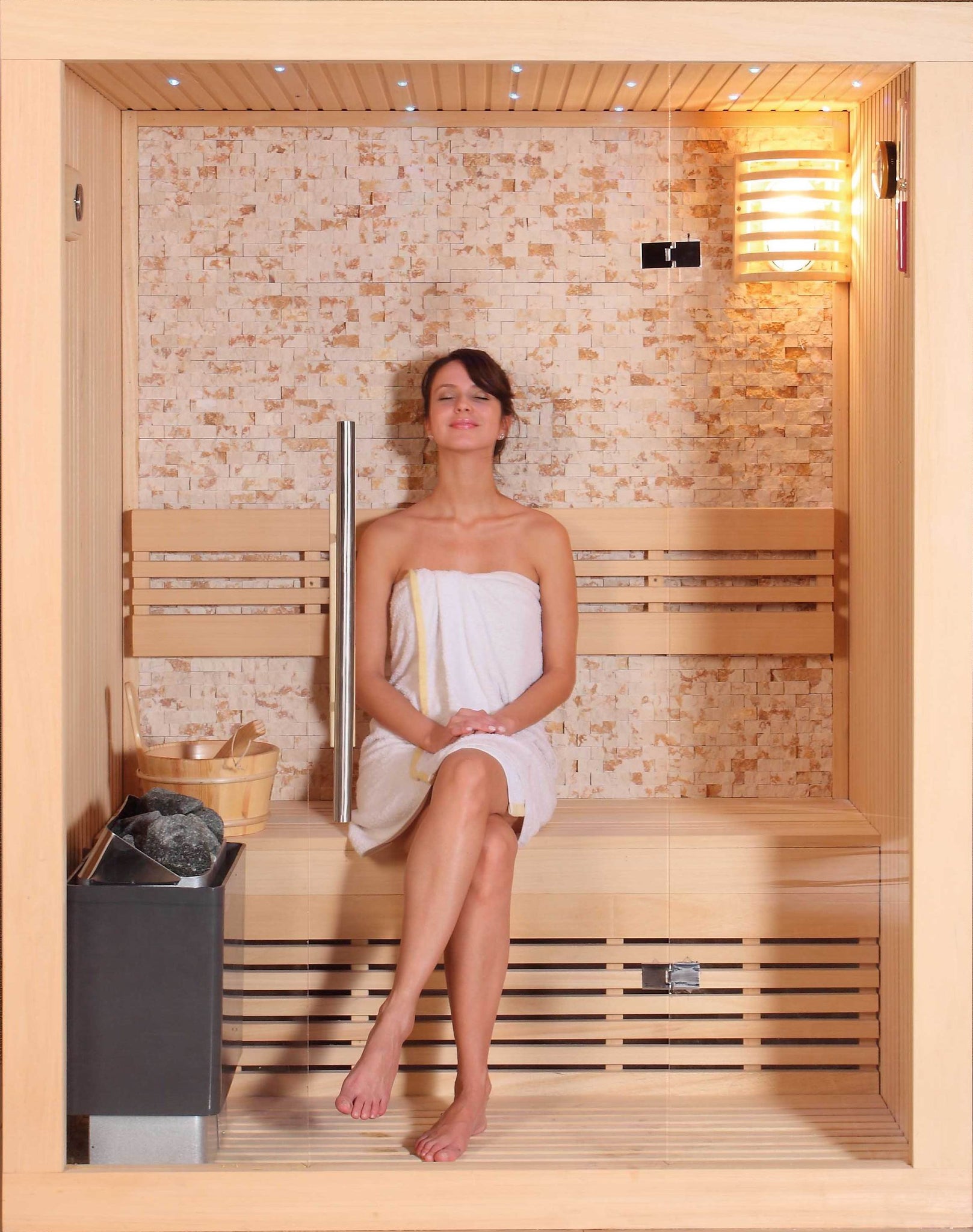The Greatest Guide To Traditional Sauna
The Greatest Guide To Traditional Sauna
Blog Article
See This Report about Traditional Sauna
Table of ContentsThe smart Trick of Traditional Sauna That Nobody is Talking AboutA Biased View of Traditional SaunaTraditional Sauna Can Be Fun For EveryoneThe Ultimate Guide To Traditional SaunaExcitement About Traditional Sauna
Many of the weight lost in a sauna is water loss and is re-gained upon rehydrating. Nevertheless, undeniably sauna can be a vital component of a healthy and balanced weight management program. To consider the distinctions in between conventional and IR saunas, I will divide these right into proven, theoretical, and made distinctions.Therefore, the hottest factor in the saunawhich is at the ceiling straight above the sauna heateris commonly between 185 and 190 F. Claims that a traditional sauna surpasses 200 F is just not true and not applicable for electric saunas offered in the US. The temperature level for a far-infrared sauna is generally set between 120 and 140 F; nevertheless, unlike the conventional sauna, the objective in and IR room is not to accomplish a heat.
As a result of this, the temperature level difference is nearly irrelevant, considering that profuse sweating leads to both sauna kinds, yet the method of heating up the body is various. In an IR sauna the bather will feel warm and will certainly sweat profusely, but at a lot reduced temperature levels (Traditional Sauna). Thus, if the objective is to invest longer amount of times in the sauna, the IR sauna is a good option
When a traditional sauna has been appropriately warmed, the sauna wall surfaces are warm, the air temperature has accomplished established temperature level and the rocks are super heated. As a fascinating side note, the warmed wall surfaces and the rocks are discharging far-infrared warmth, combined with the heated air, to produce an "covering warmth".
The Greatest Guide To Traditional Sauna

When the high temperature is achieved, the elements cycle on and off to keep the high temperature level. A lot of conventional sauna users enjoy putting water over the rocks to produce steam to elevate sauna moisture levels. The advantages of pouring water over the rocks include: making the area much more comfortable, dampening the nasal passages, and allowing the usage of aromatherapy by mixing essential oils with the water.

When the power enters the body, it triggers the body temperature level to enhance and inevitably leads to sweat. In an infrared sauna it is essential for the emitters/heaters to stay on virtually continuously. Given that there is no mass of rocks to keep warm, the sauna will certainly cool if the emitters shut down.
As stated above, the sauna bather in an infrared space desires to place himself in front of operating emitters to obtain optimal benefit from the heat. The heating time for the 2 rooms can be very different, relying on exactly how the rooms are utilized. For a conventional sauna, a bather should allow 30-40 mins for the space to attain a preferred temperature and to appropriately pre-heat the rocks.
Little Known Facts About Traditional Sauna.
A well built sauna will normally accomplish a temperature of 150-160 F in about 30-40 minutes. For hotter temperature levels, the area may need to heat for a longer duration.

Typical saunas have a tendency to be bigger (for this reason use even more electricity) than infrared saunas, although typical saunas are definitely offered in one and 2 person dimensions as well. For a two-person traditional sauna, 5x6 or 5x7 size is most preferred. The leading bench can conveniently seat 2 or 3 people and is likewise long sufficient to lie down during the sauna session.
The smart Trick of Traditional Sauna That Nobody is Talking About
The typical expense per kWH of power in the U.S. is approximately $0.11, so a 4.5 kW heater will cost roughly $.50 to run for one hour, if the heating unit runs constantly for one hour. Commonly a sauna heating system will certainly compete 75% of the initial hour and 50% of succeeding hours on given that the components cycle once the established temperature level is attained.

Finally, there is a hardly ever gone over difference in the social experience in between both rooms. While our society has shed a few of the social advantage of the standard sauna experience, it can be very socially fulfilling (Traditional Sauna). From household time in the sauna, to heart-felt conversations with loved ones, to sauna partiesthe traditional sauna experience can cause intimate interacting socially
Little Known Questions About Traditional Sauna.
A lot of greater end infrared areas consist of tinted light therapy, sound systems and full-glass fronts.
Report this page